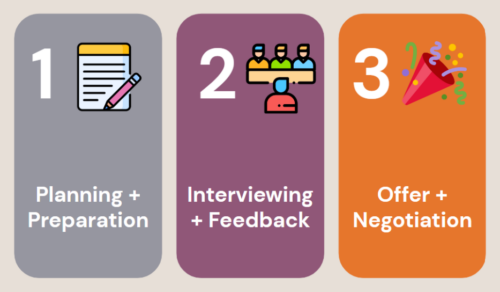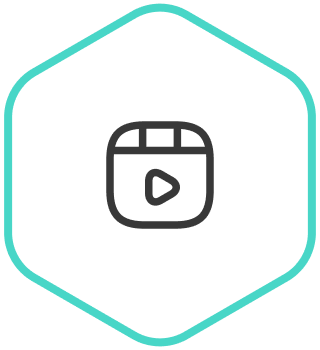Written by Rachael Leinster, Senior Talent Partner
We often get asked about the value we add to our clients and over the past few months I've been working in partnership with one of our great clients Field on their approach to Equity, Diversity and Inclusion.
I wanted to share what we've been doing, why we've been doing it, and where we are now with the hope that maybe there will be something useful you can take away from this.
EDI is one of those words that gets thrown around a lot; but what does it actually mean?
Equity: being fair & impartial
Diversity: state of being diverse; variety
Inclusion: action or state of including or of being included within a group or structure
Sometimes, organisations start out with the best intentions but soon find themselves falling into the trap of diversity washing- the practice of hiring from minority groups to give the illusion of a diverse and inclusive environment. On the face of it, it can look like you’re solving some of your problems but real diversity is about making real changes; both personally and organisationally.
Where did we start?
Firstly, we needed to understand what we were doing well, and what we weren’t doing so well.
We started with an overhaul of our Applicant Tracking System (ATS) moving to Pinpoint Applicant Tracking System to give us better insight and control of our data. Then we pulled all the data we had and started to dig down into it.
Once we had better control of our data we needed to figure out what it was we actually did with the information. So, we set up an EDI working-group with team members across the business, all of us with different ideas, views, and backgrounds.
We decided that to be successful we would need to give ourselves targets, and actions - so we looked at what the data was telling us and picked three key areas that we felt would have the most impact. We committed to setting group OKRs to ensure we drove the change we wanted to see, and agreed that we would look at:
Socio-economic background
Race
Gender
Then, we got to work!
What did we actually do?
It’s one thing to understand what you need to improve, but how do you begin to work tangible changes into the DNA of the company?
The EDI working group and the People Team started putting our heads together, researching, sharing ideas and defining a plan of action.
One area we agreed would have the most impact in the short-term would be the overall hiring process; so we did a deep dive and audit of our internal hiring process, and started putting together a company wide training session on Fair & Inclusive Hiring Practices that we then presented to the entire company.
What does our end-to-end hiring process look like & how did this relate to our EDI initiatives?
We knew we needed to make our hiring processes as fair and impartial as possible. Which means mitigating our individual biases - but how aware are we as a business of the biases that we all have…We wanted to make sure we approached unconscious bias in a non-accusatory way; looking at the science behind it and how it can impact us as humans. The first part of our training focused on unconscious biases and how these can manifest within the hiring process, and that we can’t remove, but only recognise and challenge our own biases.
We identified 8 key biases whilst being mindful of the Dunning-Kruger Effect

Once we understood the different types of biases, we could focus on the best way to mitigate these across the three key pillars of our hiring our process

Planning + Preparation
For this to be effective, we created team career maps, did robust benchmarking, and mapped out levels across the business - this wasn’t a quick fix and took a few months to do effectively, but this gave our Hiring Managers the insight they would need to effectively plan for new hires by thinking about the level required, current team structure and gaps, and salary banding.
Why do we place so much emphasis on doing thorough planning + preparation
- We’re all human and as we know, humans have biases - whether we’re aware of them or not
- We know we need to overcome them and remove them as much as possible from the hiring process
- The best way to do that is through planning and delivering a consistent and fair interview process where everyone is given a level playing field
The more we plan, the more we remove the space for individual bias to creep into the process…
Interview + Feedback
We introduced a rule of 3

And then focused on how we give and construct feedback, sticking to the Situation, Behaviour, Impact (SBI) model and rolled out a 1-5 scoring metric that we are able to build into the scorecards on our ATS, reducing the impact of being affected by groupthink
- Reflect on how many characteristics you share with the candidate - does this make them more / less likeable to you?
- Give examples for all feedback offered - explain your reasons for the conclusions you’re drawing, to avoid relying on heuristics / stereotypes or other unconscious biases
- Use the values to give behavioural feedback - think about what the candidate demonstrated through their answers and their behaviour
‘They weren’t the right culture fit’....It just isn’t good enough - all that says is that their face didn’t fit and you’re being influenced by your own biases.
Another area we are currently considering is adding a ‘Likeability’ metric that will hold zero weighting on overall scores but allows us to be more objective in our scoring - the psychology behind it is pretty interesting and we’re working closely with PinPoints developers to implement this feature in our ATS.
Offer + Negotiation
Have a diverse interview panel - make sure both genders are represented, and include people of other social and racial background to yourself if possible.
- Bring key decision-makers together once all interview stages have been completed, making sure everyone has read all interview feedback
- Have an open discussion about each candidate and the relative merits of each - focus on observed behaviour, objective skills, things explicitly tested for during the interview process
Use the scorecard to rank candidates across all skills, experience and behaviours.
- Relying on collective scoring helps us overcome individual biases that we may not be aware of
- Reviewing scorecard trends can also help us see trends in the feedback that might help us decide between candidates (ie the highest scoring candidate overall isn’t necessarily the best person to hire - if, for example, they didn’t score well against the values)
Use the team career map to define the role expectations and salary bands.
- How many of the role requirements does the preferred candidate fulfil - where do they sit on the team career map?
- What is the salary band for that level / role? How does this align with the rest of the team?
- Consider in advance whether you’re open to negotiation on this offer - remembering that male candidates are four times as likely to negotiate offers than their female counterparts
We’re not looking to hire people exactly like us, we need to hire people who can help us grow and build the best team!
The temptation when hiring is to look for people you want to go for a drink with….But, what we’re actually looking for is people to build the best pub quiz team with!
Where are we now?
We’re now carefully reviewing our data, we’ve set a good foundation but we still have a lot to do and we’re now looking at other ways we can continue to build and nurture EDI across the business.
Further Reading





